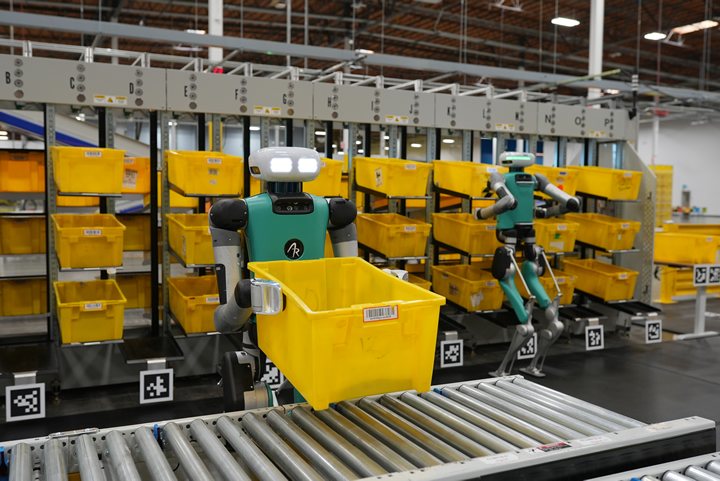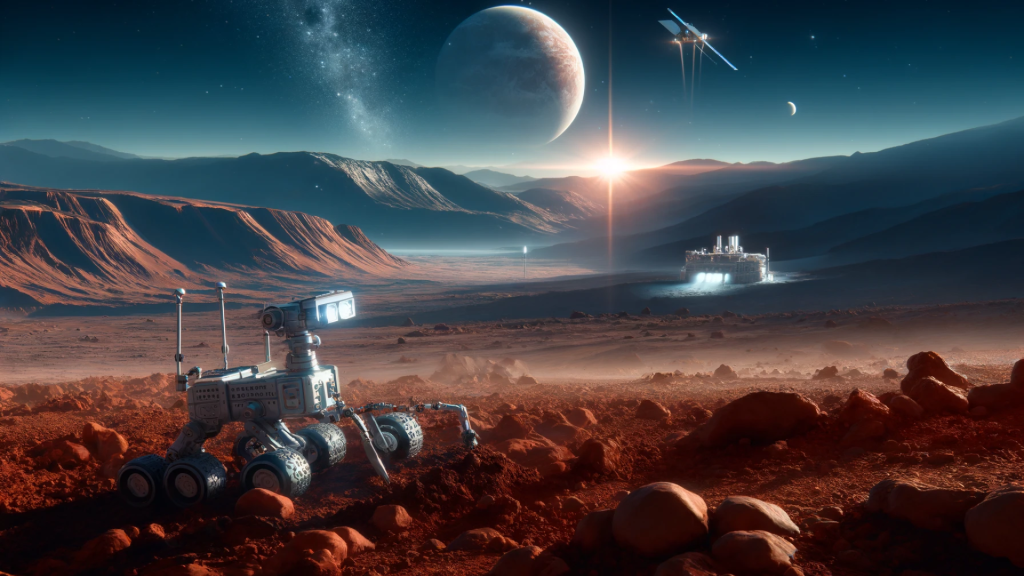Robot that feels touch - Amazon's Vulcan conquers warehouses - AI revolution
Amazon recently introduced Vulcan, a cutting-edge warehouse robot that has the ability to "feel" touch. This innovative robot is equipped with advanced force sensors and powered by artificial intelligence, enabling it to delicately handle objects with varying levels of pressure based on the product type.
Enhanced Precision with Advanced Force Sensors
The Vulcan robot's advanced force sensors allow it to accurately determine the optimal pressure required when interacting with objects. This unique feature enables Vulcan to handle even the most fragile items, ranging from electronics to glass packaging, without any risk of damage.

Human-Like Sense of Touch
Vulcan stands out as the first robot from Amazon designed to mimic the human sense of touch. Its arm, equipped with a suction cup and camera, collaborates with a second mechanical arm to efficiently organize items within densely packed warehouse compartments. The artificial intelligence integrated into Vulcan continuously learns and enhances its movements based on previous interactions, allowing it to manage up to 75% of Amazon's product catalog.
Optimizing Warehouse Operations
Products in Amazon's warehouses are stored in compartments containing multiple items, which posed challenges for previous robot models due to the lack of precise grip. Vulcan overcomes this limitation by adeptly placing and retrieving products, significantly expediting the order fulfillment process.

Currently operational in warehouses in Spokane (USA) and Hamburg (Germany), Vulcan has processed over half a million orders, with plans for extensive implementation across Europe and North America within the next two years.
Fostering Collaboration, Not Replacement
With the introduction of Vulcan, questions have surfaced regarding the impact on warehouse jobs. Amazon reassures that the robot is intended to support human workers rather than replace them. Vulcan is specifically designed to undertake uncomfortable or hazardous tasks, such as reaching high or low shelves. It operates up to 20 hours a day and can seek human assistance when faced with challenging items.
Future Applications and Beyond
Aaron Parness, Amazon's director of applied science, highlights the significance of manipulation in robotics, emphasizing the importance of physical interaction with objects. Vulcan's innovative design, which integrates a sense of touch, is paving the way for future applications beyond warehouse operations, including packaging shipments, handling food products, and potentially in healthcare and space exploration.

As technology advances, the integration of artificial intelligence and tactile capabilities is expected to revolutionize various industries, making machines more versatile and human-like in their functions and interactions.
Amazon's Vulcan is just the beginning of a new era in robotic technology, hinting at a future where intelligent machines play a pivotal role in enhancing efficiency and productivity across different sectors.
For more updates on the latest advancements in artificial intelligence and business applications, stay informed with our free newsletter.
If you are interested in exploring further advancements in AI technology, you can also read about ChatGPT Becomes a Shopping Advisor – OpenAI Introduces New E-Commerce Features.




















